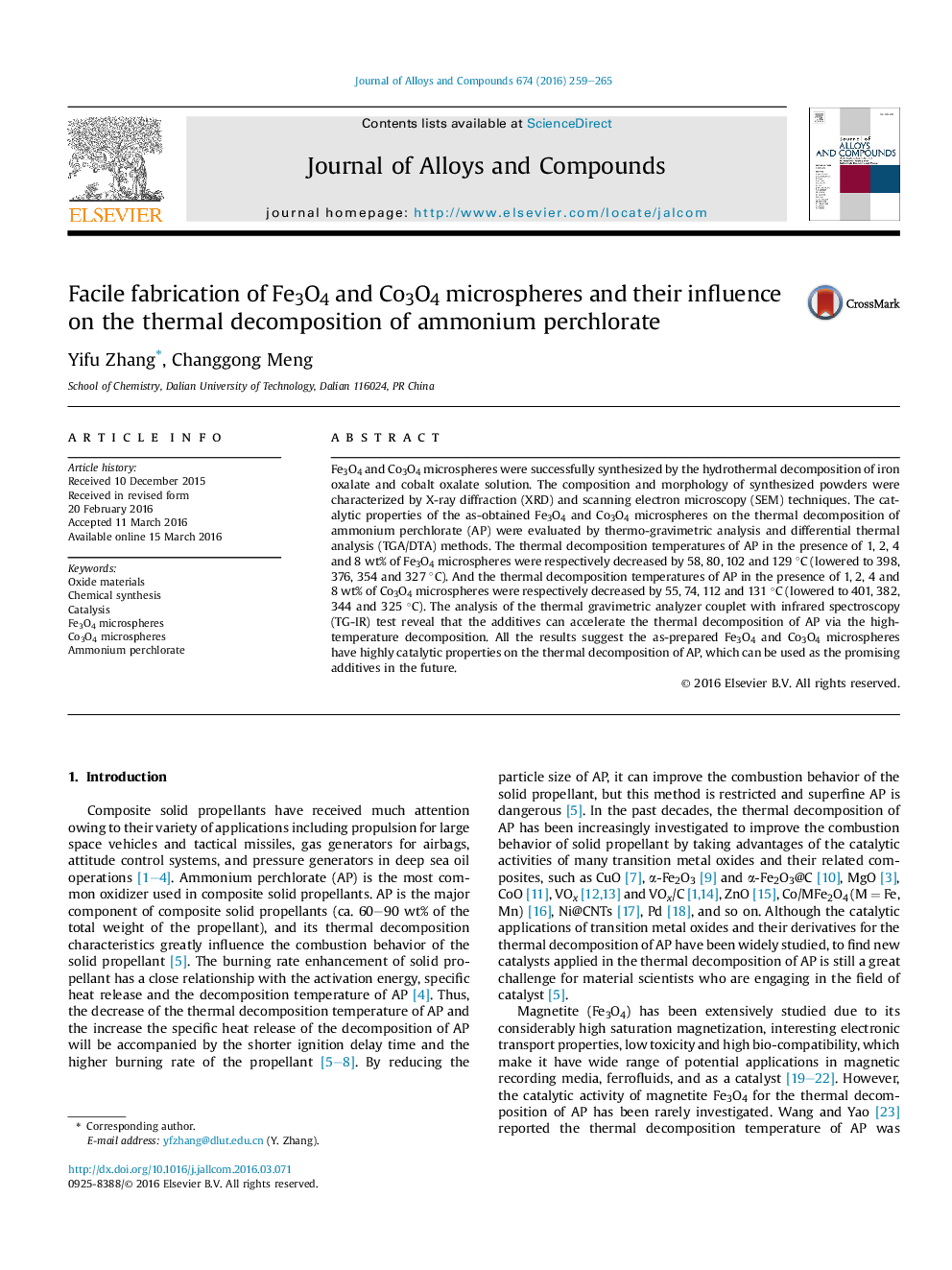| Article ID | Journal | Published Year | Pages | File Type |
|---|---|---|---|---|
| 1605958 | Journal of Alloys and Compounds | 2016 | 7 Pages |
•Highly uniform Fe3O4 and Co3O4 microspheres were successfully synthesized.•The Tc of AP with 1, 2, 4 and 8 wt% of Fe3O4 microspheres was decreased by 58, 80, 102 and 129 °C.•The Tc of AP with 1, 2, 4 and 8 wt% of Co3O4 microspheres was decreased by 55, 74, 112 and 131 °C.•The thermal decomposition process of AP was detected by TG-IR.
Fe3O4 and Co3O4 microspheres were successfully synthesized by the hydrothermal decomposition of iron oxalate and cobalt oxalate solution. The composition and morphology of synthesized powders were characterized by X-ray diffraction (XRD) and scanning electron microscopy (SEM) techniques. The catalytic properties of the as-obtained Fe3O4 and Co3O4 microspheres on the thermal decomposition of ammonium perchlorate (AP) were evaluated by thermo-gravimetric analysis and differential thermal analysis (TGA/DTA) methods. The thermal decomposition temperatures of AP in the presence of 1, 2, 4 and 8 wt% of Fe3O4 microspheres were respectively decreased by 58, 80, 102 and 129 °C (lowered to 398, 376, 354 and 327 °C). And the thermal decomposition temperatures of AP in the presence of 1, 2, 4 and 8 wt% of Co3O4 microspheres were respectively decreased by 55, 74, 112 and 131 °C (lowered to 401, 382, 344 and 325 °C). The analysis of the thermal gravimetric analyzer couplet with infrared spectroscopy (TG-IR) test reveal that the additives can accelerate the thermal decomposition of AP via the high-temperature decomposition. All the results suggest the as-prepared Fe3O4 and Co3O4 microspheres have highly catalytic properties on the thermal decomposition of AP, which can be used as the promising additives in the future.
Graphical abstractReal-time FTIR spectra to reveal the thermal decomposition process of AP.Figure optionsDownload full-size imageDownload as PowerPoint slide
